In Grade 4, we learnt how innovative container gardens are used to grow crops where there is little space. Discuss what you know about innovative container gardening.
Vertical and horizontal innovative gardens
Activity 1
Finding out differences between vertical and horizontal innovative gardening.
Use digital devices or print resources to find information on innovative gardening.
Let us Find Out
Working in groups
Look at the types of innovative gardening practices in the following pictures:
A.
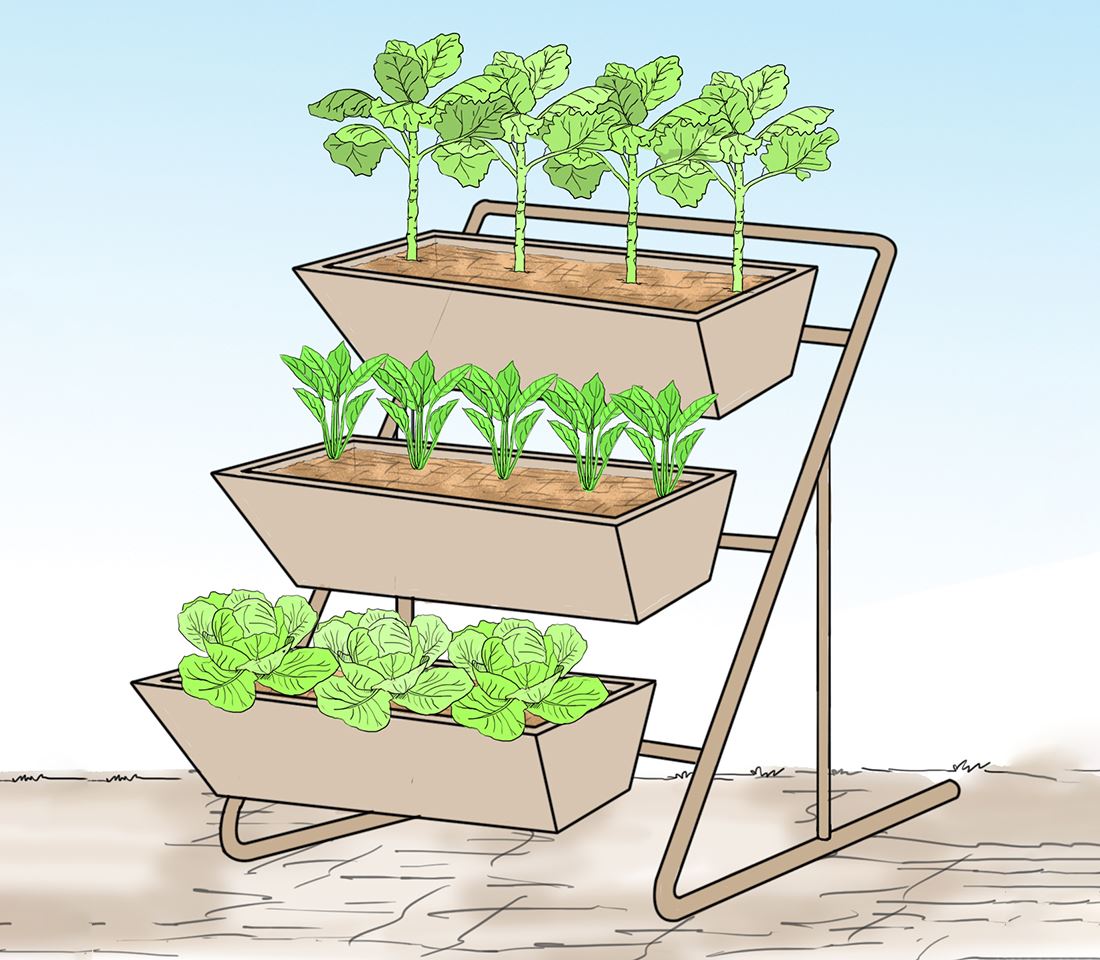
B.
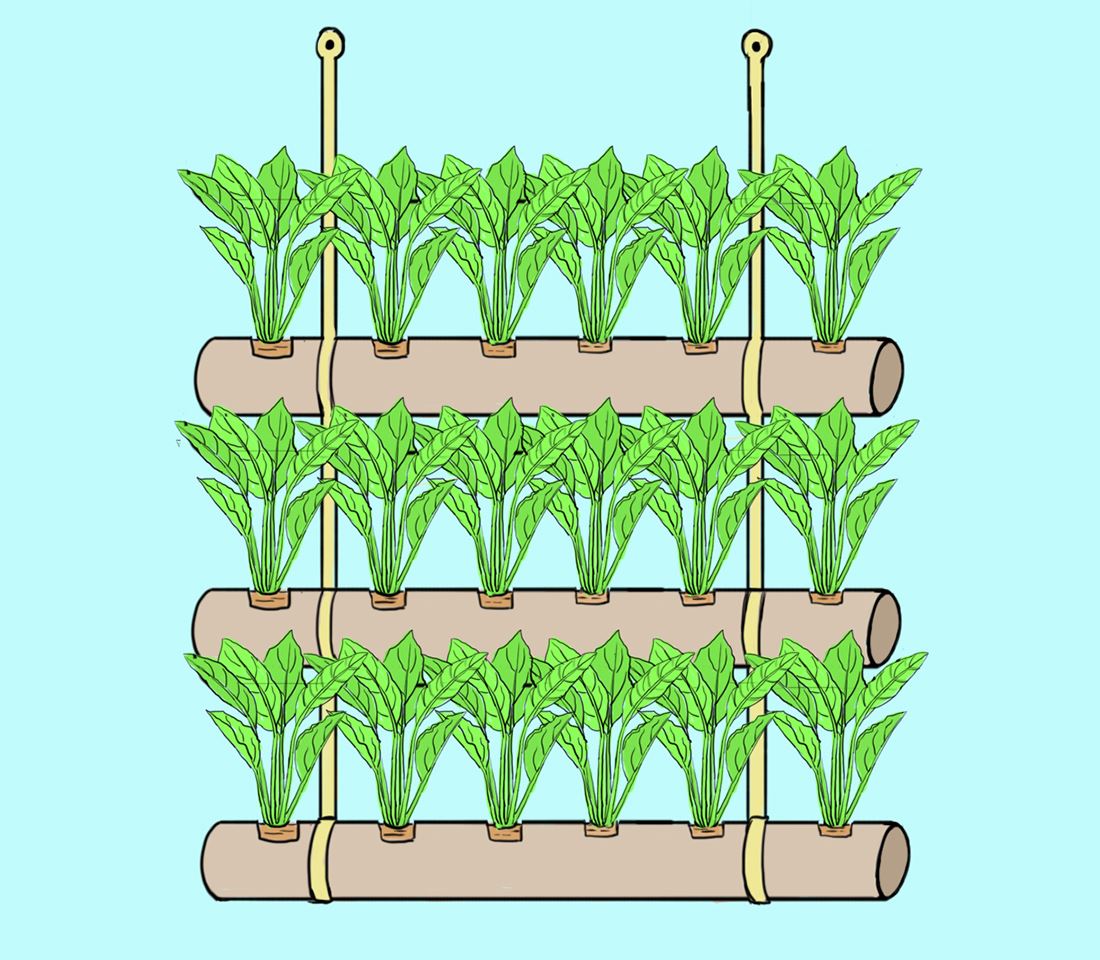
C.
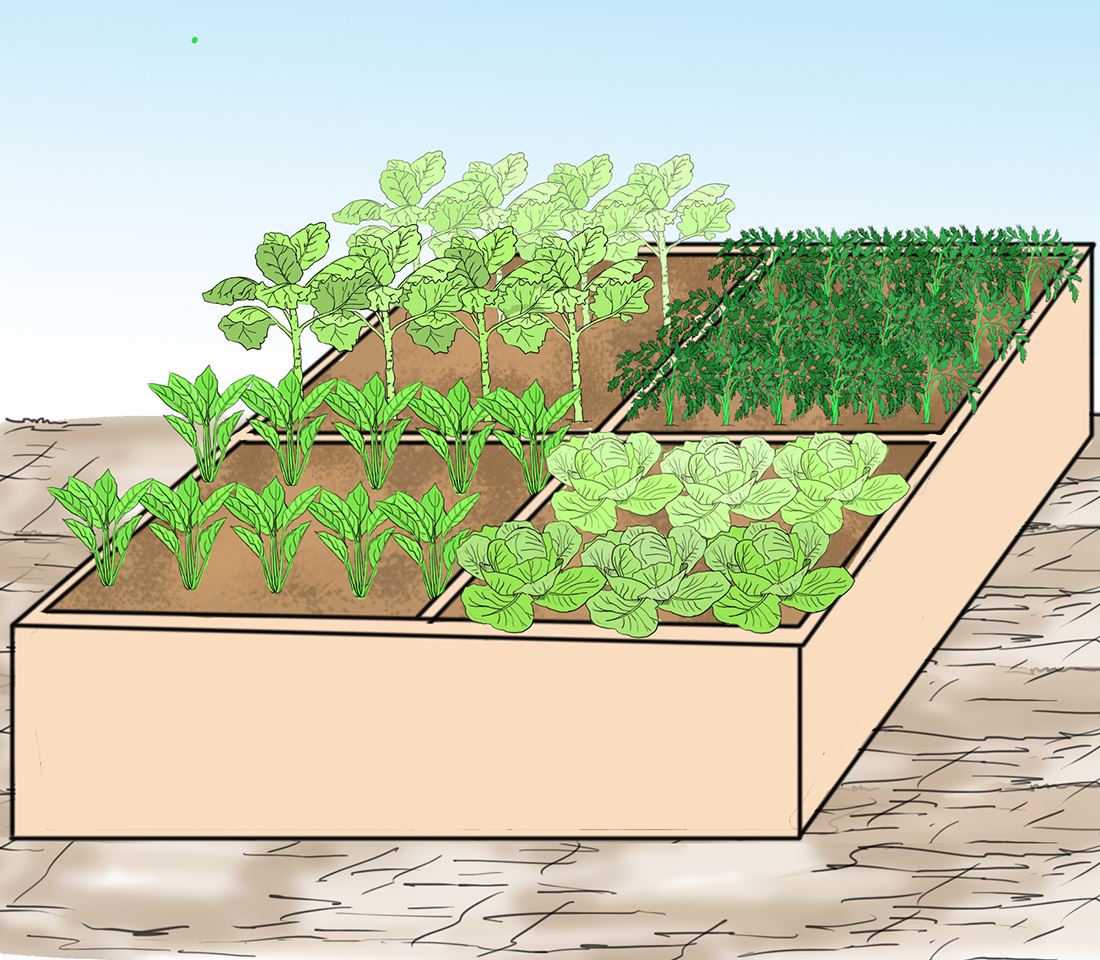
D.

- From the pictures, identify vertical innovative garden and horizontal innovative garden.
- What differences can you see between the vertical and the horizontal innovative gardens?
- Which of the two types of innovative gardening practices use a lot of ground space?
- Use magazines, newspapers or library books to get information on innovative gardening.
- Photocopy the information from newspapers and magazines, cut them out and paste them in exercise books.
- Label the pictures pasted in the album.
- Name the album “innovative gardening.”
- Share your findings with the other groups.
Let us understand
- Vertical innovative gardens occupy smaller ground space than the horizontal gardens.
- Some horizontal gardens do not need containers.
- The album created from the print resources can be used to store information on innovative gardening.
- The album can be used to present the same information when needed.
Innovative gardening practices
Various crops need different innovative gardening practices.
Activity 2
Observing various innovative gardening practices for different crops.
Let us observe
- Observe pictures or photographs showing various crops growing in vertical and horizontal innovative gardens.
- You can also watch video clips showing various crop gardens in vertical and horizontal innovative gardens.
Working in groups
- Name type of crops suitable for the vertical innovative gardening.
- Name the crops suitable for the horizontal innovative gardening.
- Describe innovative gardens which need more ground spaces.
- In groups, discuss the innovative gardening practices you would practice at home.
Let us understand
Deep rooted crops are suitable for horizontal innovative gardening.
There are many ways in which innovative gardening can be practiced.
Activity 3
Identifying suitable ways for practising innovative gardening.
Let us Find Out
- Use a digital device to search for information on methods of practicing both vertical and horizontal innovative gardening.
- Pictures of both vertical and horizontal innovative gardening are obtained from magazines on gardening.
- Print and cut the pictures to create your album.
- Create a folder and name it innovative gardening practices.
- Paste separately the photos on vertical innovative gardening from the horizontal innovative gardening.
- Label them and use the folder as your digital portfolio.
Look at the following photographs and identify the type of innovative gardening shown.
A.
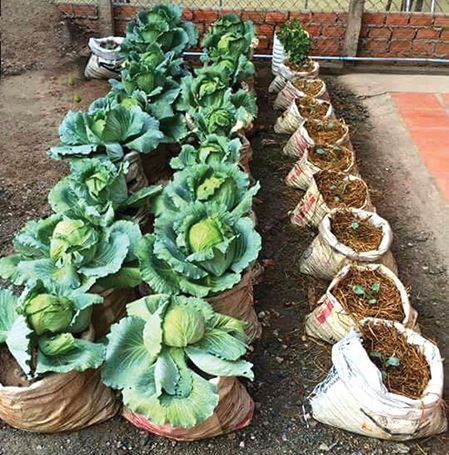
B.
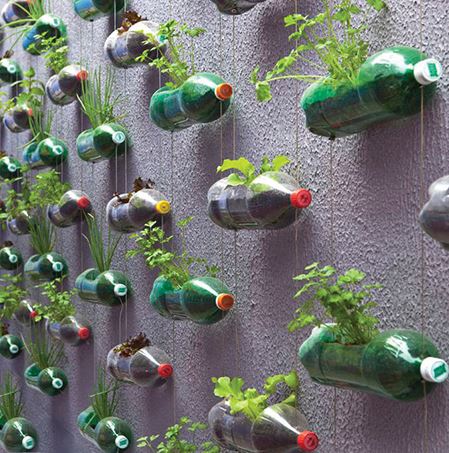
C.

D.
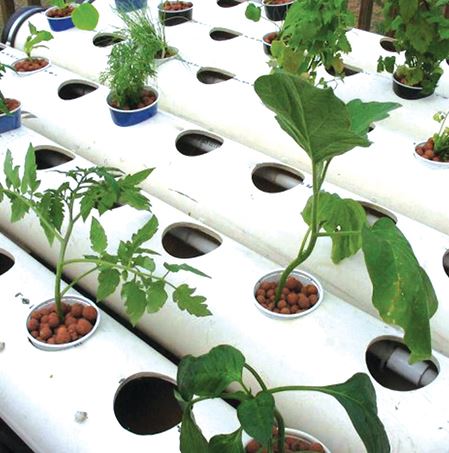
In pairs
- Observe the pictures and photos you have stored in your portfolio.
- In what ways are the gardens in the pictures innovative? Share with the class.
Let us understand
- Innovative gardens can be used to grow crops on small spaces of land.
- They are innovative ways of growing crops in small spaces.
Materials used in innovative gardening
In Grade 4, we used a container to make garden. We collected and used different containers for gardening. We placed them in different places.
Activity 4
Identifying suitable materials for practising innovative gardening.
In this activity, we shall identify containers that we can use for vertical and horizontal type of innovative gardening.
Let us Find Out
In pairs, look at the following pictures and do the activity that follows.
A.
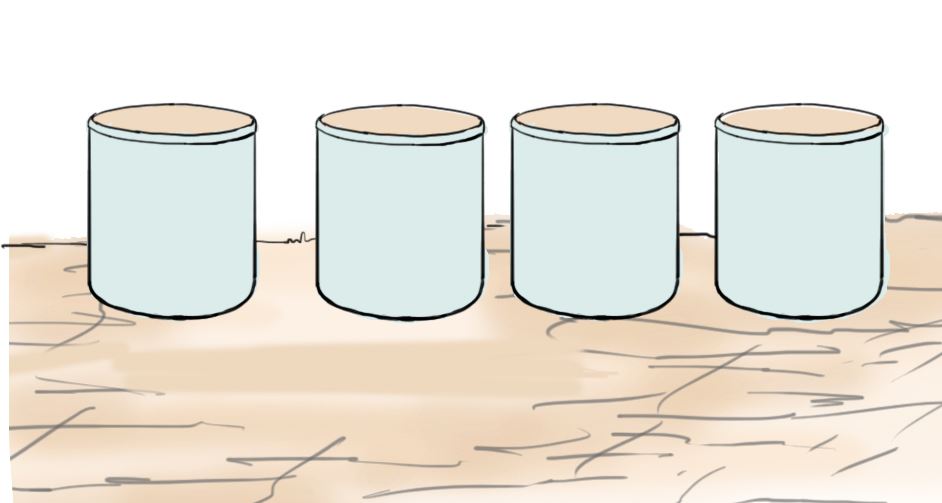
B.
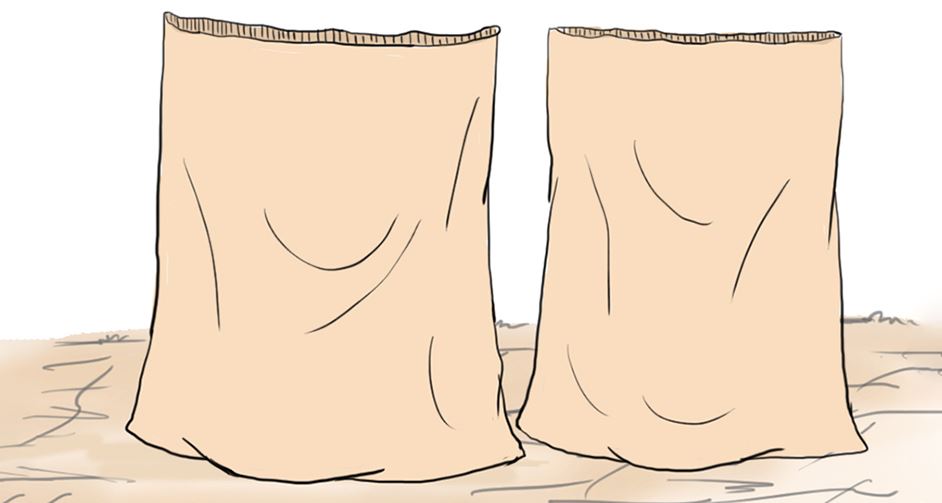
C.

- Find out what material each picture is showing.
- Discuss how the materials can be used for innovative gardening.
- Name materials used for the vertical innovative gardens.
- Name materials used for horizontal innovative gardens.
- Discuss where these materials can be found in the school compound.
Share your findings with the others in class.
Working in groups
Walk around the school compound and collect as many plastic bottles as you can get.
Make sure you observe safety as you collect the bottles
Place the plastic bottles at one corner of the school field. We shall use these bottles to make an innovative garden.
Discuss the type of innovative garden you would like to make from the bottles.
Share your experience with other groups.
Let us understand
- Materials such as plastic bottles and plastic pipes are used to make innovative gardens. They can be hanged on the wall to make innovative vertical gardens.
- Sacks are used to make horizontal gardens when they are filled halfway with soil.
- Sacks can also make vertical gardens when they are filled with soil completely.
Ways of practicing innovative gardening
How can we practice innovative gardening? Where can innovative gardens be located?
Activity 5
Finding out how innovative gardening can be practised and where they can be located.
Let us Find Out
In pairs
- From library books, magazines and digital devices, find out how innovative gardening can be practiced.
- Discuss where the innovative gardens could be located within the school compound.
Look at the following pictures and answer the questions that follow.
A.
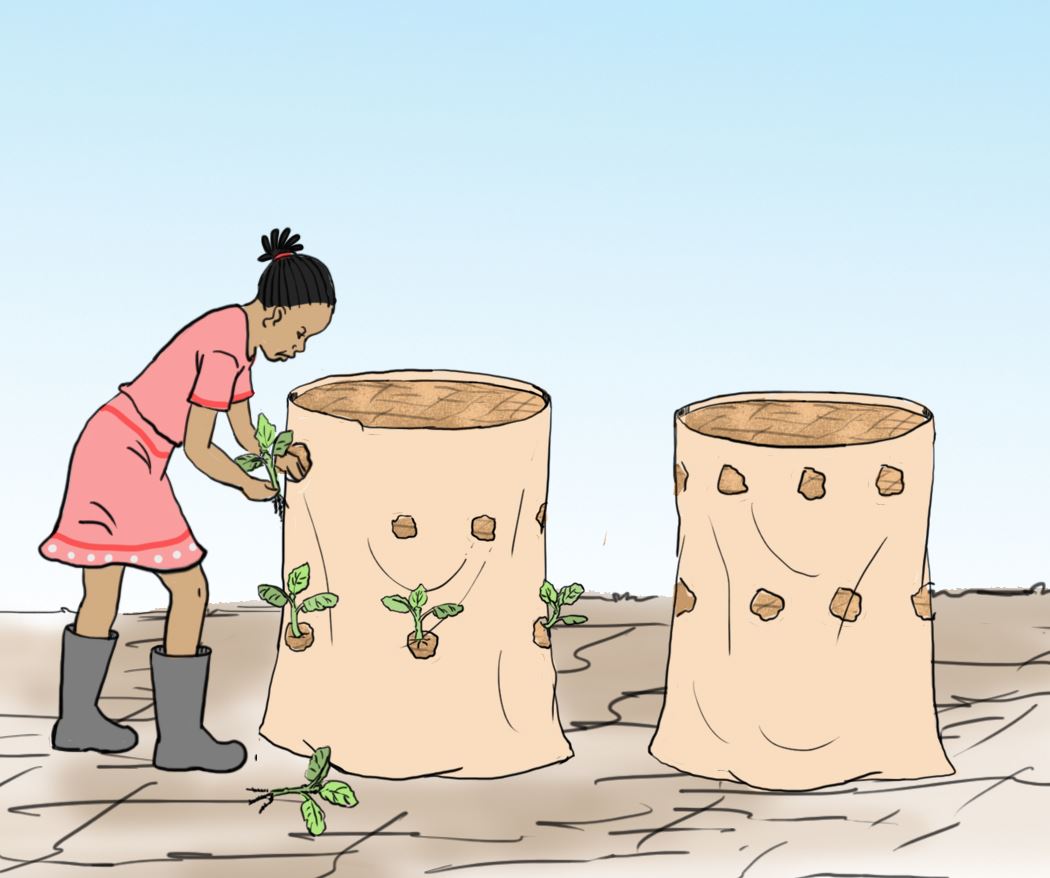
B.
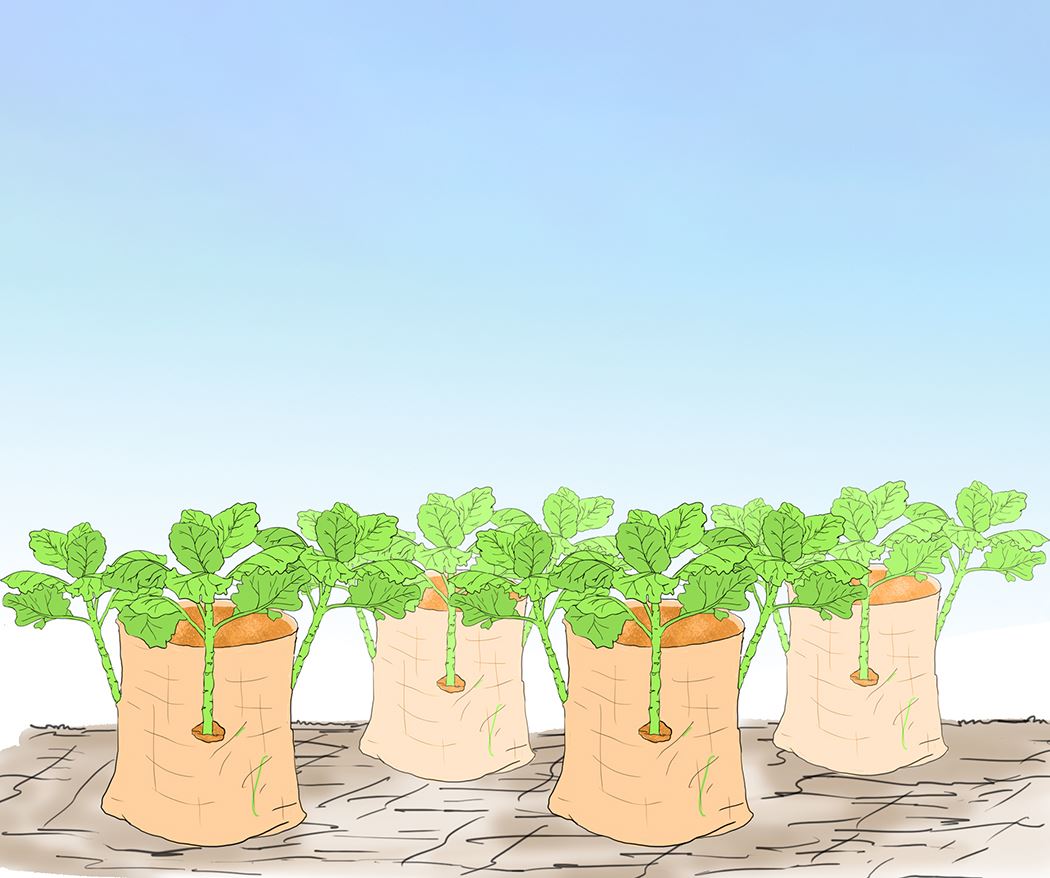
C.
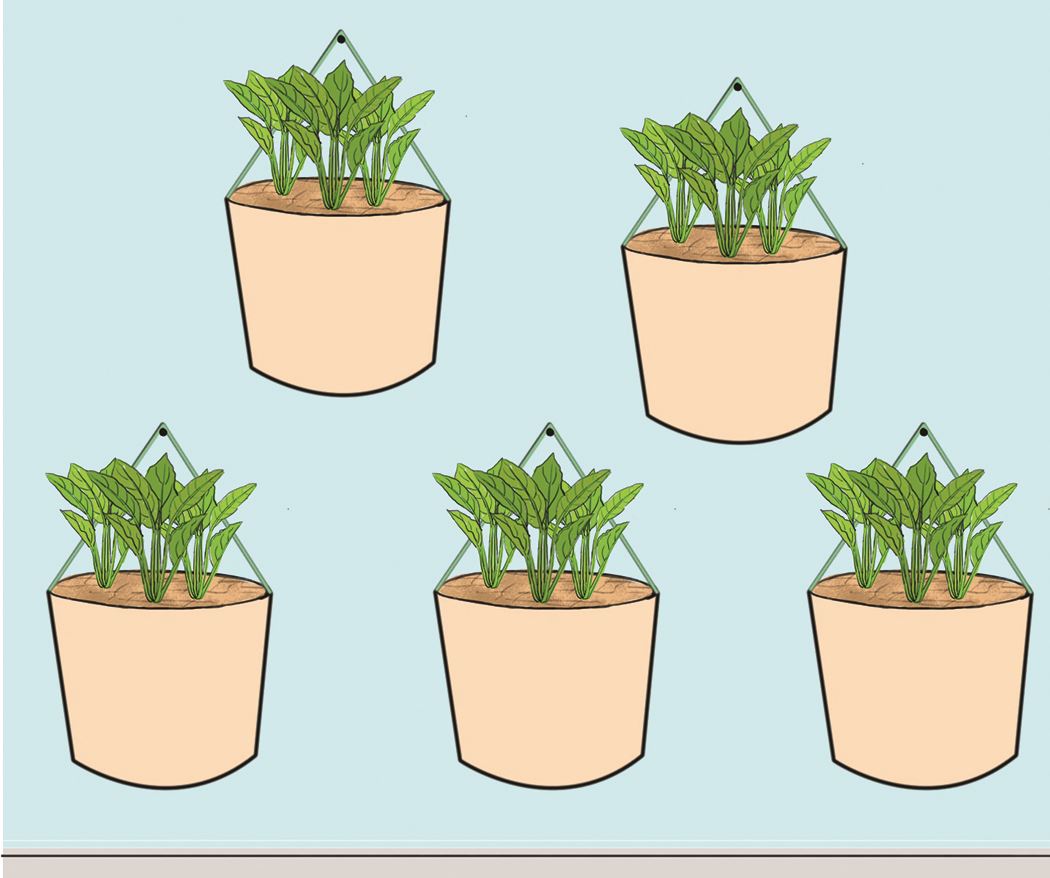
D.
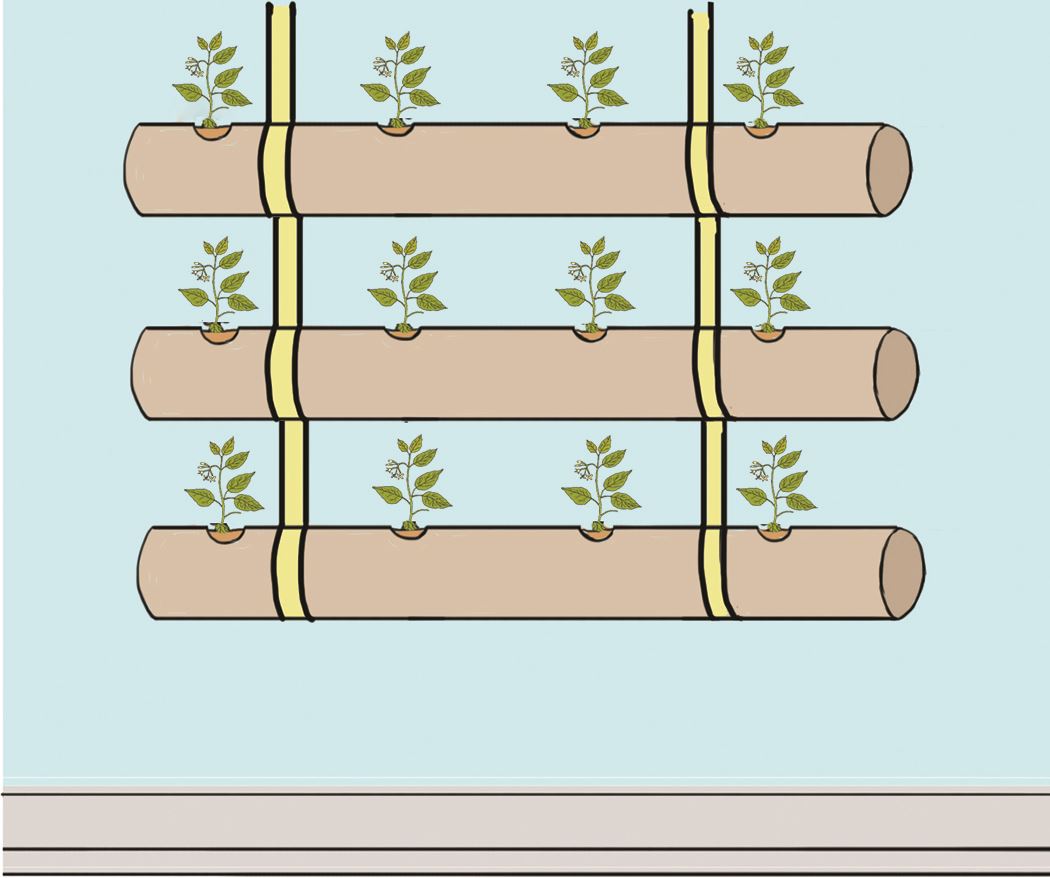
E.
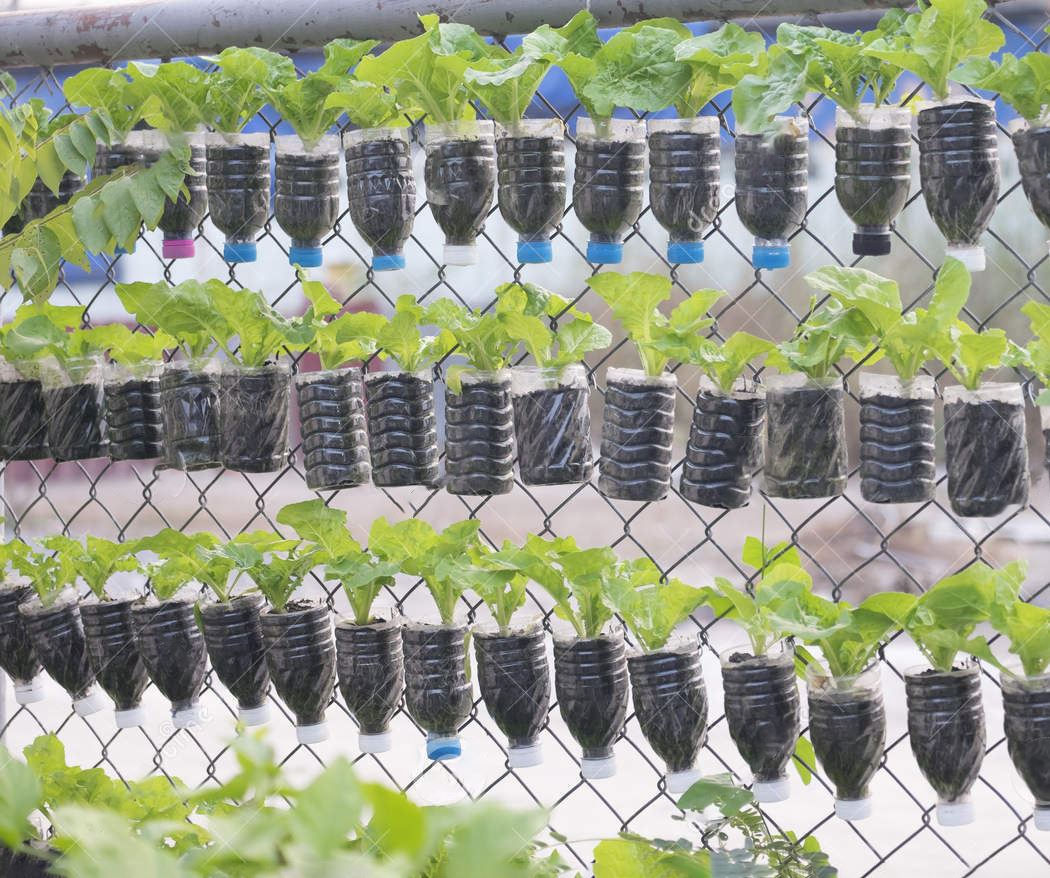
F.
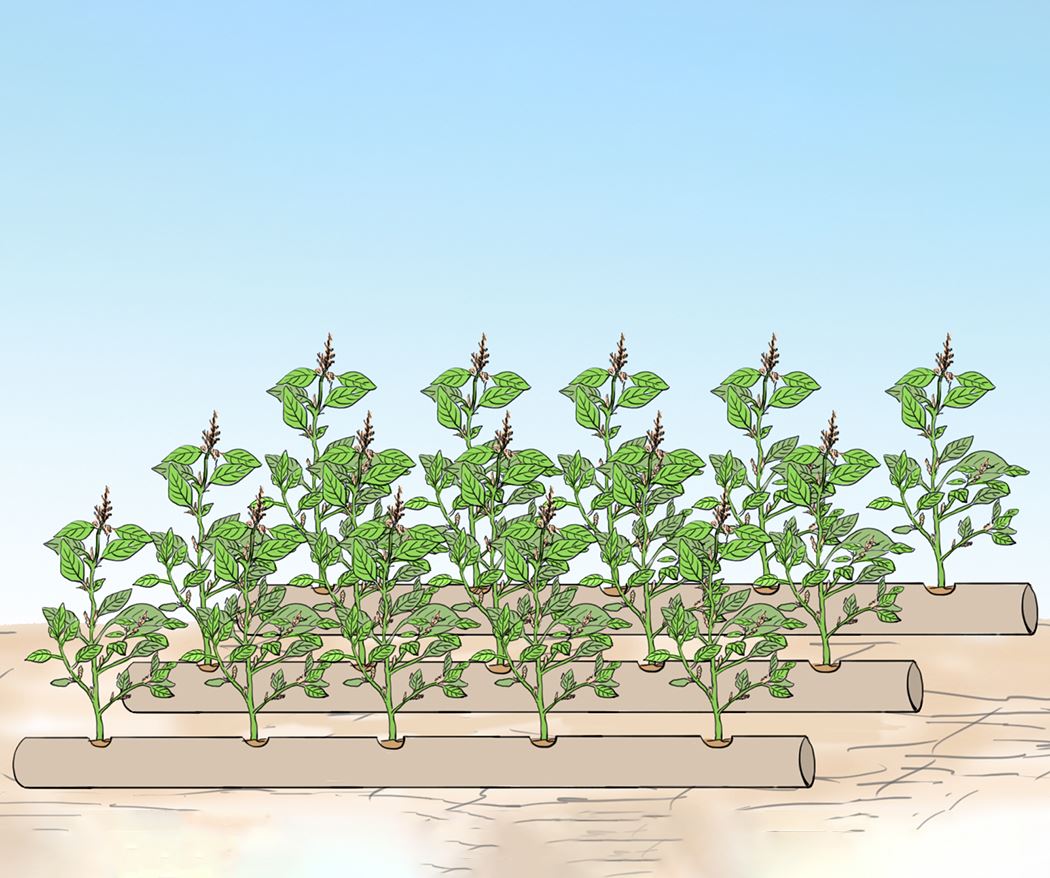
- How is innovative gardening practised in each picture?
- Where are the innovative gardens placed in each picture?
Share your findings with others.
Let us understand
- We can grow our own food using innovative gardens.
- Sacks can be arranged in small flower gardens or along the paths.
- The bottles can be placed on vertical walls to make vertical gardens.
- Plastic tubes can also be placed along vertical walls and held with clips.
- Bottles can also be hanged vertically on the roof of the balcony.
Preparation of innovative gardens for sowing vegetable seeds
Some innovative gardens can be prepared from sacks, plastic bottles and plastic pipes.
Activity 6
Preparing sack gardens for sowing vegetable seeds.
Sack gardens are used to grow vegetables. They can form vertical or horizontal innovative gardens.
Let us practice
Working in groups
Prepare a sack for planting vegetables.
Follow the guidelines shown in the pictures to prepare your sack garden.
A.
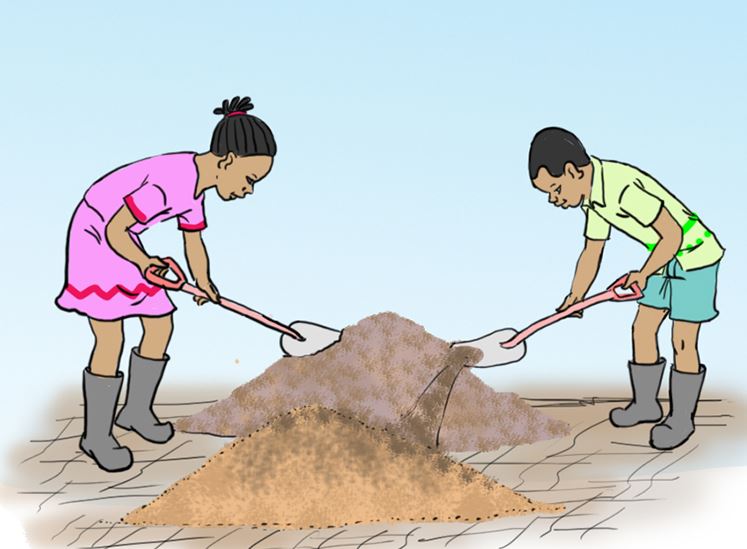
B.
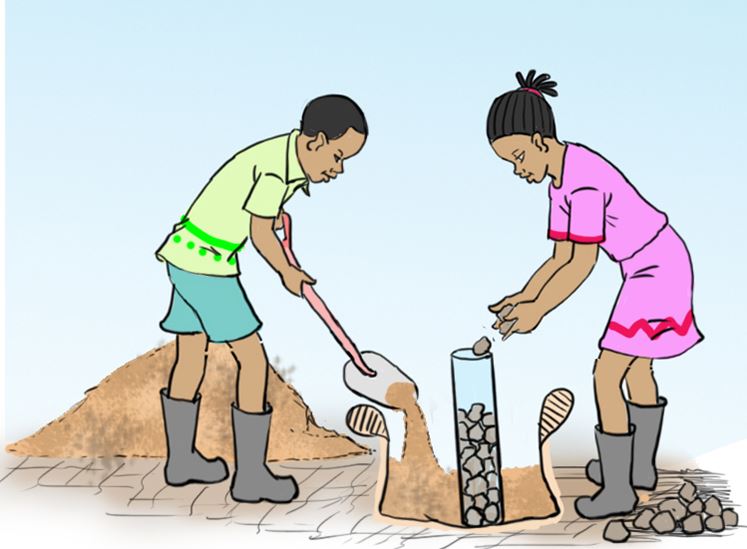
C.

D.
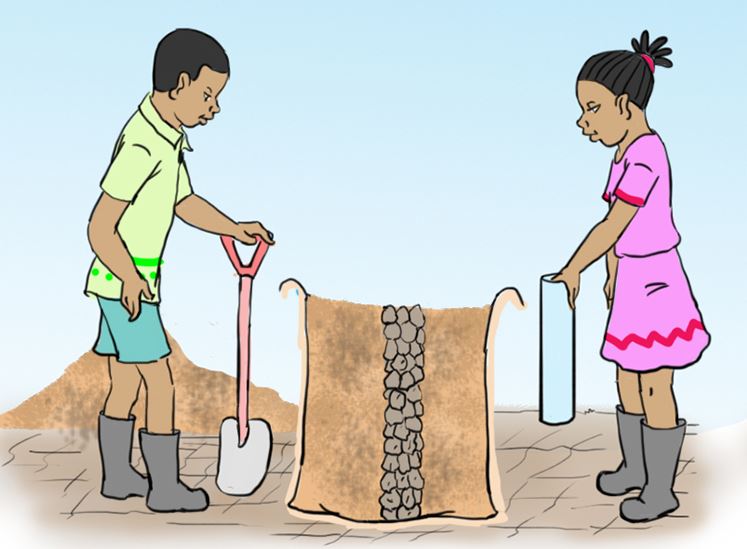
E.

F.

Share your experience with the other groups.
Let us Find Out
- Why are the stones put in the middle of the sack?
- Why do we mix compost manure with top soil?
- What are the sticks at the sides of the sack used for?
Share your experiences with the other groups.
Let us understand
- Mixing compost manure with top soil makes soil fertile for innovative gardens.
- Stone columns allow water to flow to the lower level of the sack.
- Holes are made to enable water to drain.
- Sack garden can be arranged to form vertical or horizontal innovative gardens.
Activity 7
Preparing plastic bottles for sowing vegetable seeds.
We learned that plastic bottles can be used for making innovative gardens.
Let us practice
Working in groups
Prepare plastic bottles for planting vegetable seeds.
Follow the guidelines shown in the following pictures to prepare plastic bottles for planting your vegetable seeds:
A.

B.
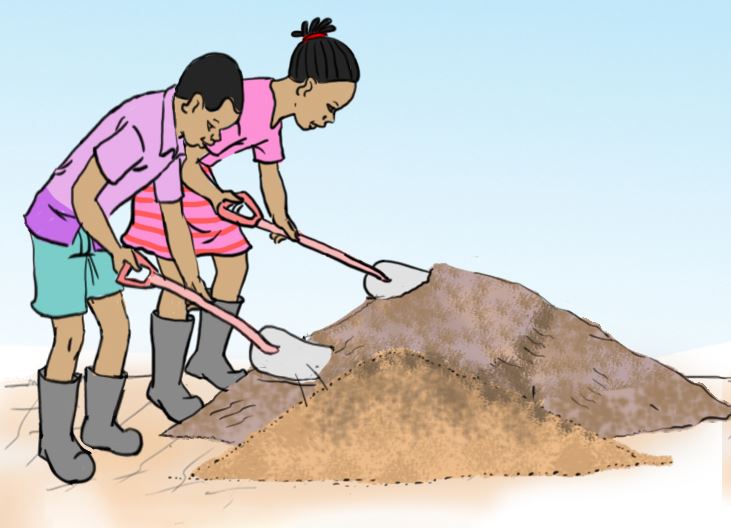
C.

D.

E.
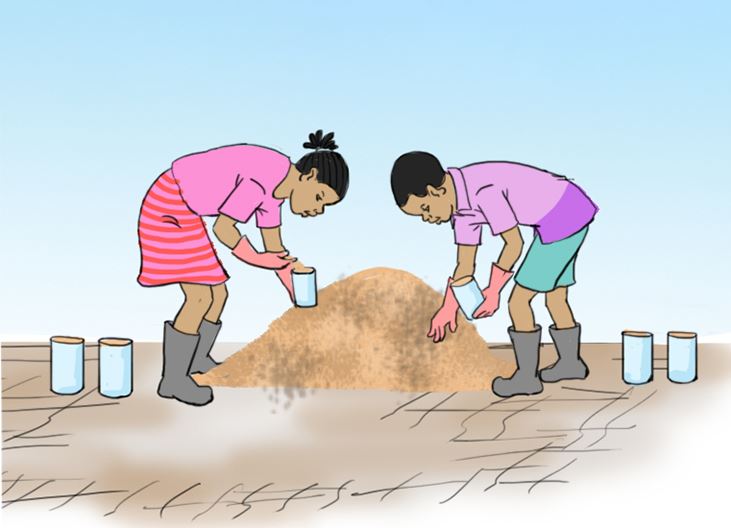
F.
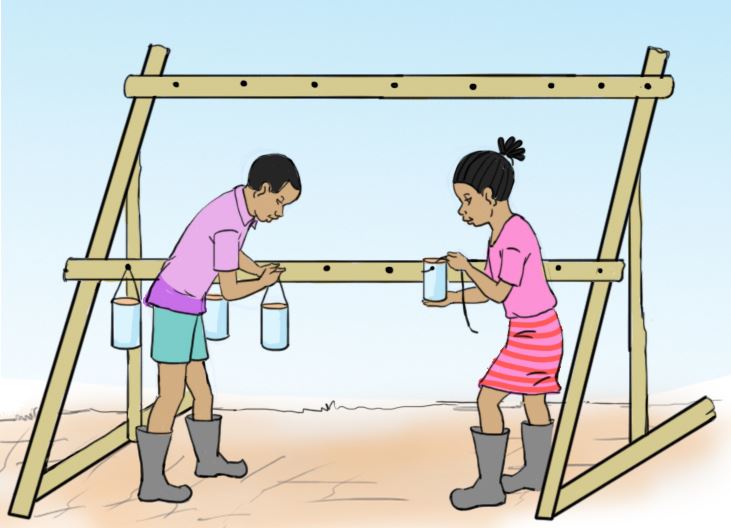
As you work in pairs, discuss the following questions:
- Why are pebbles placed at the base of the bottle?
- What is the string used for?
- How does the use of plastic bottles for innovative gardening help to keep the school clean?
Let us understand
- Plastic bottles are used to make vertical gardens when placed or hanged on wooden frames or walls.
- Plastic bottles can also be painted on the outside to make them colourful.
- Painted plastic bottles can be arranged along pathways to form horizontal innovative gardens.
Activity 8
Preparing plastic pipes for planting vegetable seeds.
Plastic pipes can be used to make vertical and horizontal innovative gardens for planting vegetable seeds.
Let us Find Out
Working in groups, carry out the following activities:
- Use a digital device to search for information on how to prepare plastic pipes for planting vegetable seeds.
- Print the pictures and use them to present your findings to the other groups.
- Create a folder and store the pictures in the folder. Name the folder “plastic pipes for innovative gardening” and keep it as your portfolio.
Follow the guidelines shown in the following pictures to make innovative gardens.
A.
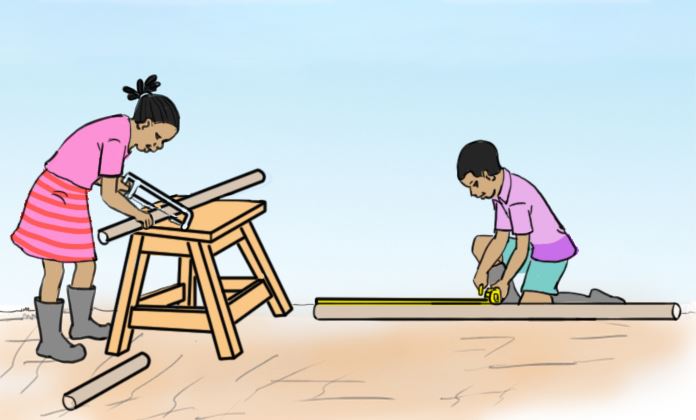
B.
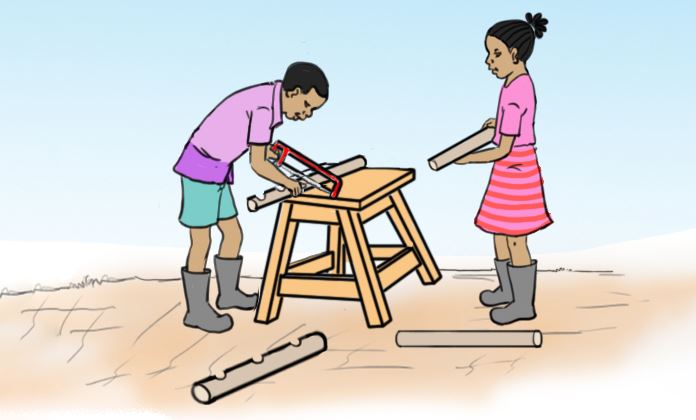
C.

Let us understand
- Handle all the tools and equipment carefully when using them.
- Bottom holes on the pipes are for water drainage.
- Excess water drips into the hole of the lower pipe.
- The half cut bottle will hold water draining from the pipe.
How to prepare vertical and horizontal innovative gardens using walls
Activity 9
Preparing an innovative wall garden for sowing vegetable seeds.
We can prepare an innovative vegetable garden on a wall.
Let us practice
Working in groups, prepare innovative wall gardens as follows:
- Collect plastic containers large enough to hold 4 kg of soil.
- Make several drainage holes at the bottom of the plastic containers.
- Cut two pieces of binding wires about half a metre long.
- Select a straight wall in the school compound.The wall should be exposed to the sun from sunrise to sunset.
- Hold each plastic containers at the top and at the bottom with the wire.
- Nail both ends of the two wires on the wall.
- Arrange the plastic containers hanging on the wall to form a vertical or horizontal pattern.
- Mix the soil with compost manure.
- Fill this soil mixture in the plastic containers and fix them on the wall hangings.
- They form wall gardens ready for sowing vegetables.
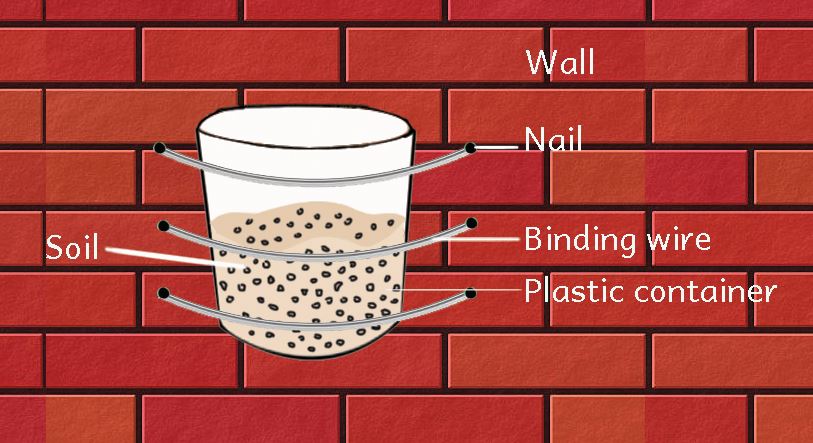
Let us understand
- The plastic containers can be small or big.
- Water drips from the top containers to the lower containers.
- The vegetables grown get sunlight throughout the day.
Sowing vegetable materials in the innovative gardens
Vegetables are grown from seeds and seedlings.
Activity 10
Sowing vegetable materials in the innovative gardens.
Let us practice
Working in groups
Transplant vegetable seedlings in a sack garden.
Use the following guidelines to plant vegetables in your prepared gardens:
A.
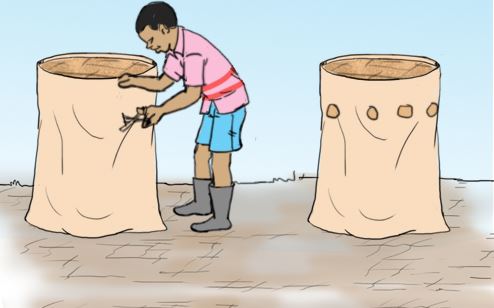
B.

C.

D.
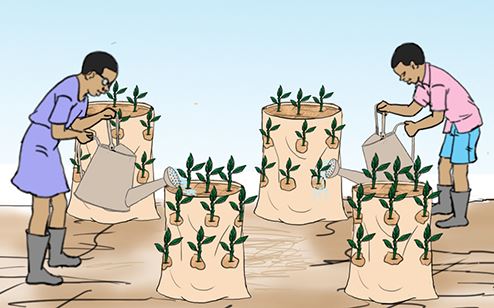
Activity 11
Sow vegetable seeds in a vertical innovative garden made of plastic pipes
A.
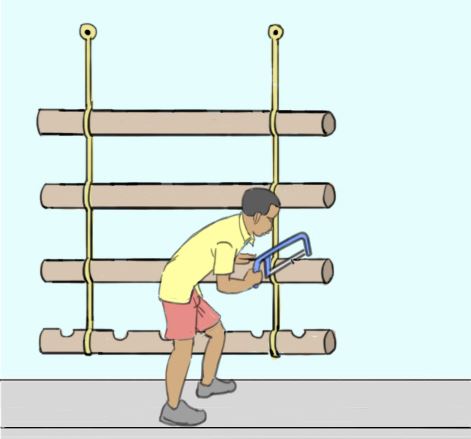
B.
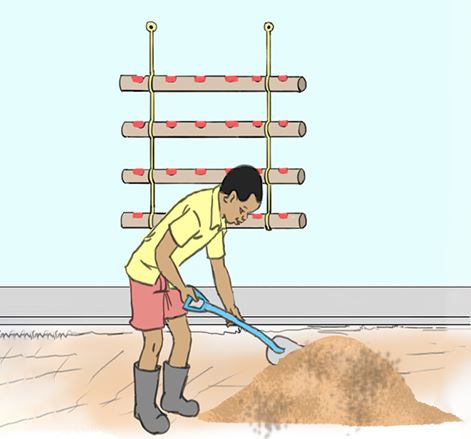
C.
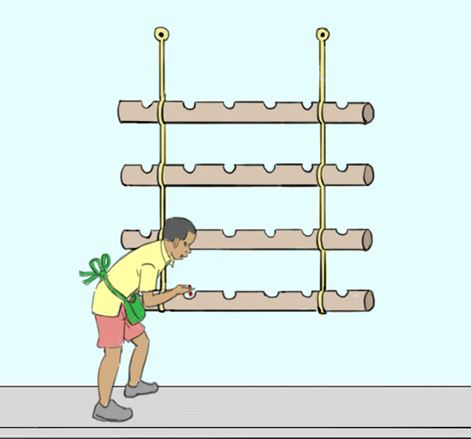
D.

Why should you apply little water in the tubes after planting the seeds? Share your experiences with the other groups.
Let us understand
- The seedlings to be transplanted should have a ball of soil around the roots.
- The seedlings should be transplanted late in the afternoon or when it is cloudy.
- Seeds sown in the plastic pipes should be given little water to avoid flooding them.
Importance of innovative gardening
Activity 12
Finding the importance of innovative gardening.
Why is innovative gardening important?
Let us share
Working in groups
Discuss what you have learned about the following:
- Where can innovative gardening be practiced?
- What materials can be used for innovative gardening?
- List the advantages of using these materials for innovative gardening.
- How does innovative gardening contribute to environmental conservation?
Share your experiences with the other groups.
Let us understand
- People with a small piece of land can use innovative gardening to grow crops.
- Innovative gardening is a way of conserving water.
- Innovative gardening contributes to environmental conservation by re-using some materials such as plastic bottles that would pollute the environment.
- Waste plastics, wires, metals and wood can be reused to practise innovative gardens.
- Innovative gardening enables families to obtain food at all times.
- Innovative gardening can be done at home.
Together with your parents or guardians prepare innovative garden at home
Activity 13
Home project
Establishing innovative gardens for growing vegetables at home.
Let us practice at home
Look at the pictures labelled a, b, c and d.
Work together with your parents or guardians to prepare vertical and horizontal innovative gardens following the guideline in the pictures.
A.

B.
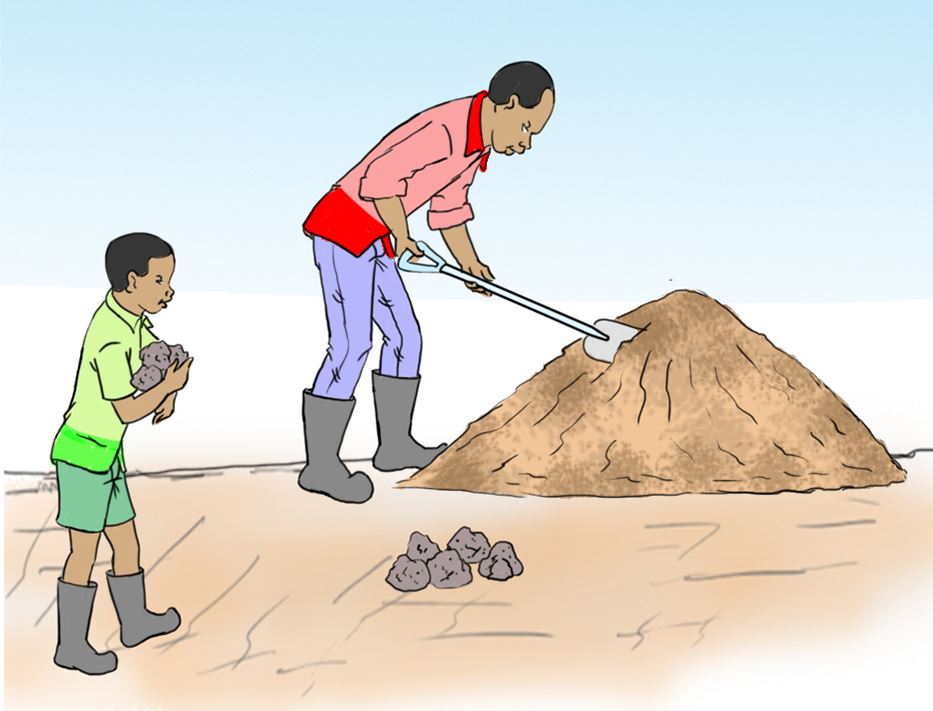
C.
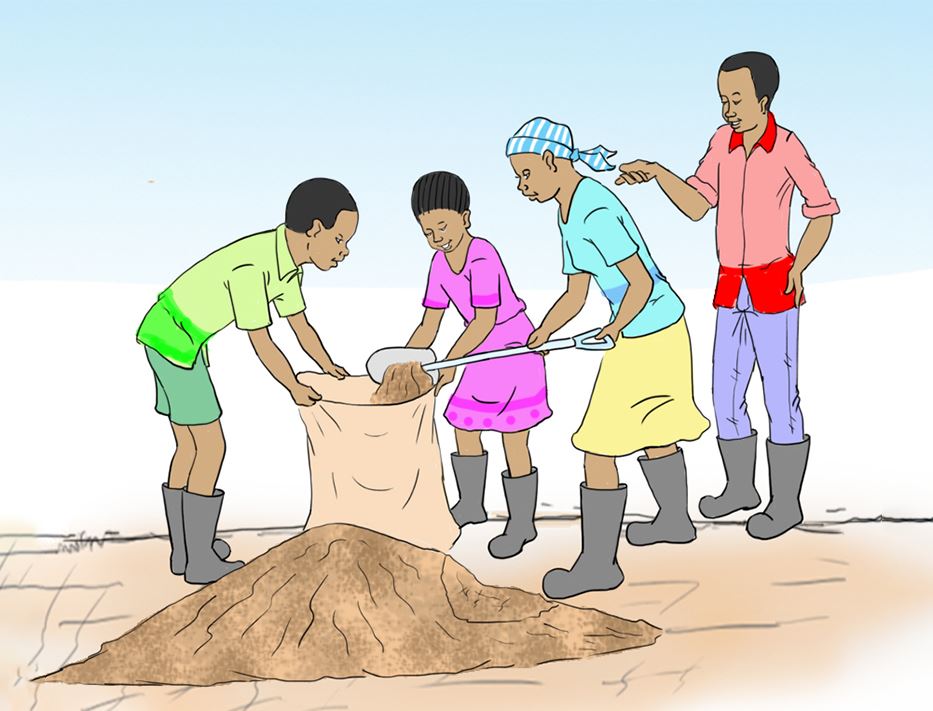
D.
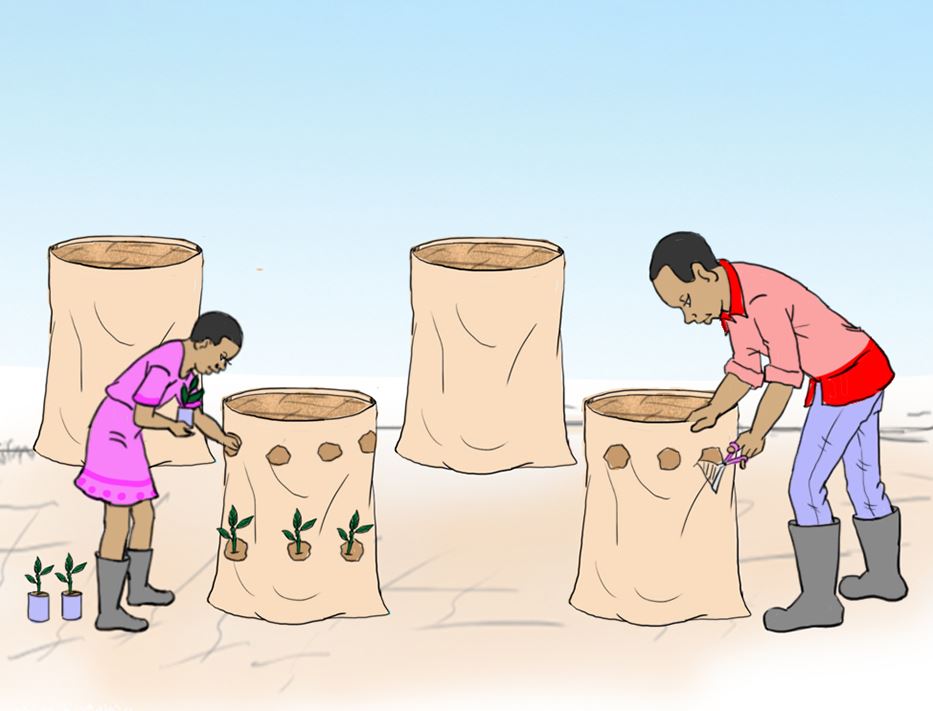
What activities are carried out in the pictures?
Let us understand
- The community can learn innovative gardening practices.
- The environment is kept clean by collecting and reusing plastic bottles, metals and wires from construction sites.
- Water at home is used economically to grow the crops.